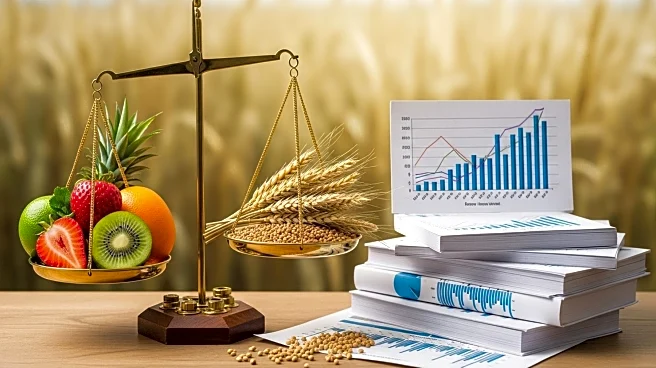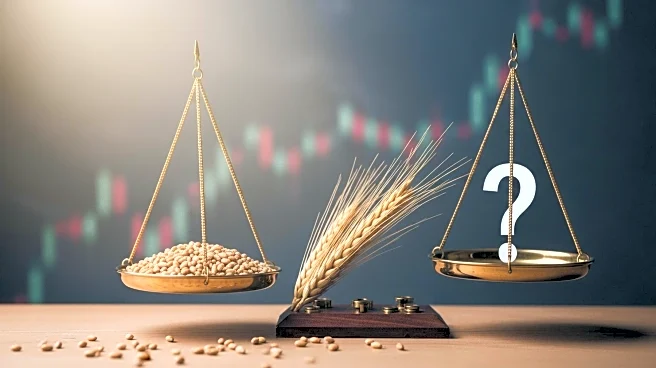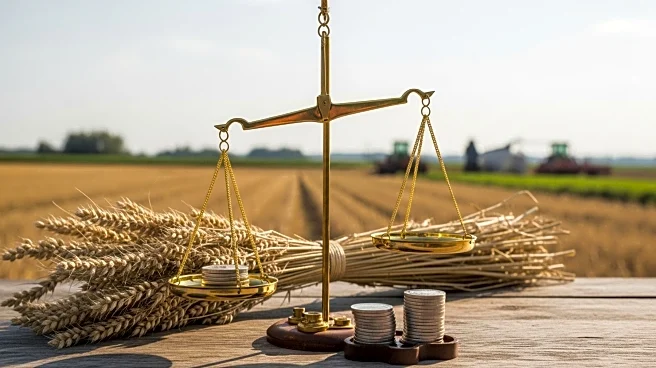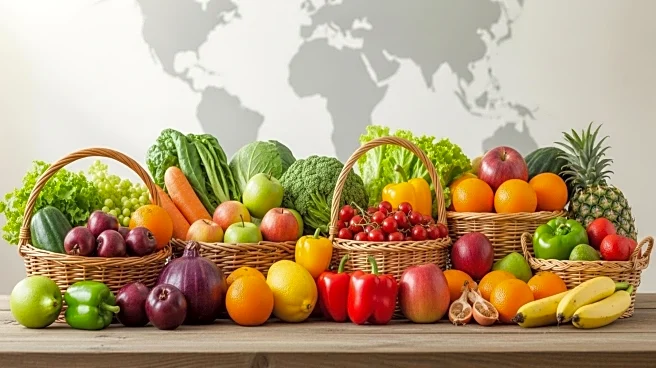What's Happening?
The upcoming USDA World Agricultural Supply and Demand Estimates (WASDE) report, scheduled for October 9, faces uncertainty due to the ongoing government shutdown. The report, crucial for farmers and market analysts, provides insights into U.S. corn, soybean, and wheat markets. The September WASDE report indicated changes in old-crop and new-crop stocks, with varying impacts on different commodities. If released, the October report will include harvest yield data and updates from the September Grain Stocks report. The report's release is contingent on the resolution of the government shutdown, which previously affected WASDE reports in January 2019.
Why It's Important?
The WASDE report is a vital tool for farmers and market participants, influencing commodity prices and agricultural planning. The uncertainty surrounding its release due to the government shutdown could disrupt market expectations and decision-making processes. Farmers rely on the report for accurate yield and stock estimates to plan their operations and manage risks. The potential delay or absence of the report could lead to increased market volatility and uncertainty, affecting commodity trading and pricing strategies.
What's Next?
The resolution of the government shutdown will determine the release of the October WASDE report. If the report is delayed, farmers and market analysts may need to rely on alternative data sources and adjust their strategies accordingly. The USDA may face pressure to expedite the report's release once the shutdown is resolved. Market participants will closely monitor developments and prepare for potential adjustments in commodity prices and trading strategies.
Beyond the Headlines
The situation highlights the broader implications of government shutdowns on critical agricultural data and market stability. The reliance on government reports underscores the need for contingency planning and alternative data sources in times of uncertainty. The potential impact on commodity markets emphasizes the interconnectedness of government operations and economic activities, affecting stakeholders across the agricultural sector.










